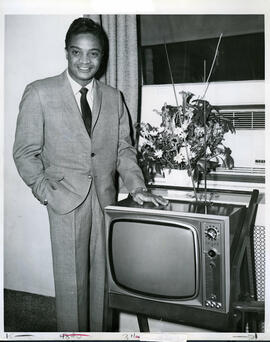Identity elements
Reference code
Name and location of repository
Level of description
Title
Date(s)
- 1871-2019 (Creation)
Extent
Name of creator
Administrative history
The Roosevelt Hospital was established in 1864 by the terms of the will of James H. Roosevelt (1800-1863), who wished to "establish ... a hospital for the reception and relief of sick and diseased persons and for its permanent endowments." It was incorporated in the State of New York that same year. The Hospital opened in 1871 on West 59th Street between Ninth and Tenth Avenues. It grew over time, adding departments, additional buildings, and a nursing school. At its opening, Roosevelt Hospital was numbered among the most modern hospitals in the country.
Under the terms of James Henry Roosevelt’s will, the hospital was to be a voluntary hospital that cared for individuals regardless of their ability to pay. When he died in 1863, his estate was valued at between $900,000 and one million dollars in cash, securities, and real estate. Through the sale of land owned by Roosevelt in Westchester County, and keen financial planning, the estate trustees increased it to over $1.25 million dollars for the purchase of land and to finance construction of the buildings. In 1866, they purchased a square block of land in what was then the northern outskirts of the city, from West 58th to 59th Streets between Ninth and Tenth Avenues. The cornerstone of the Hospital was laid on October 29, 1869, and the building was opened on November 2, 1871.
The Hospital complex included: a four-story main building, with a service-annex behind it, a five-story medical ward, and single-story men’s surgical ward, all facing West 59th Street from the center to the east end of the plot. A power plant, a mortuary building, pathology lab, and museum stood on the southwest side, facing West 58th Street.
Buildings were added over time to meet the demands for growth and improved facilities. Additions included the Private-Patient Pavilion (1885), the William J. Syms Operating Theatre (1892), the Accident Building and Ward for Sick Children (1899), a Nurses’ Residence (1911), a taller Ward building (1923), the James I. Russell Memorial Surgical Building (1949), the Tower Memorial Building (1953), the School of Nursing (1953), the Garrard Winston Memorial Building (1964), The Arthur J. Antenucci Institute of Medical Research (1986) and a new main hospital facility facing Tenth Avenue (1992).
In 1894, the Board of Trustees decided to establish a proper nurse training program, which opened in 1896. The program was very successful, graduating 2,384 professional nurses, but closed in 1974, bowing to changes in professional education demands and financial strains.
Notable physicians on staff included: Drs. William Halsted, Alonzo Clark, John T. Metcalf, T. Gaillard Thomas, William H. Draper, Francis Delafield, Robert Abbe, Charles McBurney, Evan M. Evans, James I. Russel, and Arthur J. Antenucci.
In 1979, Roosevelt Hospital and the St. Luke's Hospital Center merged forming St. Luke's-Roosevelt Hospital Center (SLR). Departments and responsibilities were shifted between the two units so that one or the other hospital was in charge of a particular service over both units. In 1997, St. Luke's-Roosevelt joined with Beth Israel Hospital under the Continuum Health Partners banner, and in 2013 the Continuum group joined with The Mount Sinai Hospital and the Icahn School of Medicine at Mount Sinai to form the Mount Sinai Health System (MSHS). St. Luke's and Roosevelt Hospitals were re-named Mount Sinai St. Luke's and Mount Sinai West.
Content and structure elements
Scope and content
Subject files of the Roosevelt Hospital. Nursing school photos are included with nursing school records. The collection includes 2 boxes of OV photos












